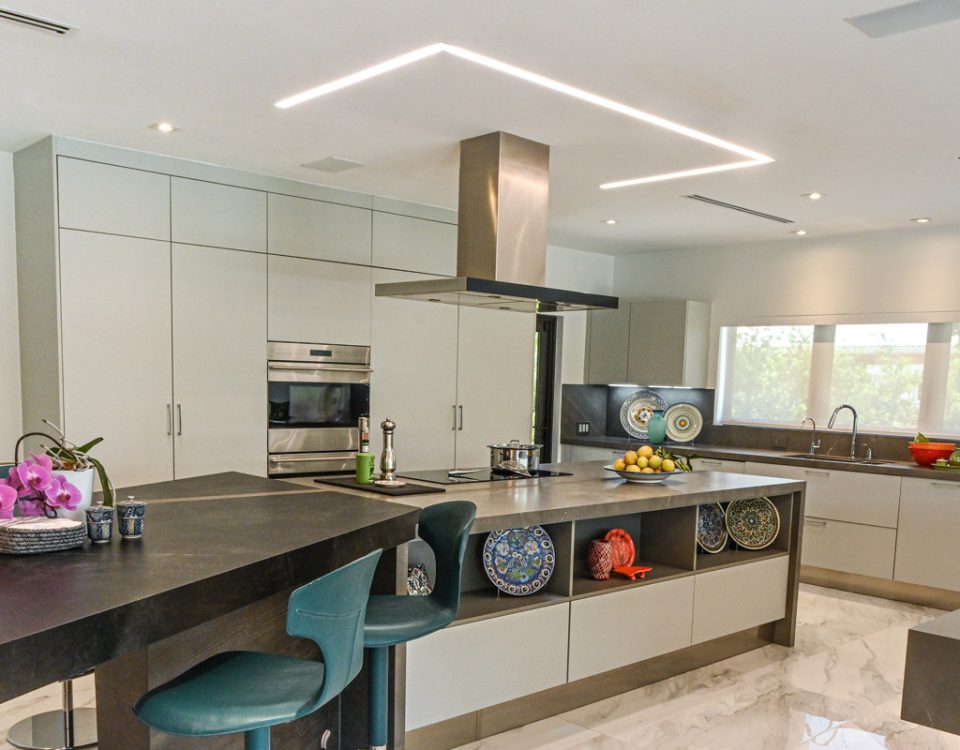Interior Designers' Secrets About Ceiling Fan's Size
When determining the right ceiling fan size, interior designers have a general rule of thumb: Use small ceiling fans for small rooms and large ceiling fans for large rooms. While that might sound simple and obvious, you won’t believe how many homeowners get it wrong. After all, there is no standard measurement for a ‘small’ room, neither is there a standard width or diameter for a ‘large’ fan, for instance.
Choosing the right size ceiling fan ensures ultimate performance, style and most importantly, comfort. The right fan size will not only keep you cool but also save you money. It also increases the durability of the fan – a small ceiling fan in a large room will have to work twice as hard to cool you off, which often results in the motor overheating and failing too soon.
Today in this article, we will be sharing some secrets that interior designers use to determine the right size of a ceiling fan for any room or space.
Pick the Right Ceiling Fan Size for Your Room
There’re generally four common ceiling fan sizes out there when searching for the perfect indoor fan for your room; small, medium, large, and great. Ceiling fans are measured by the full size of their blade span (aka blade sweep), which represent the diameter of the circle that the fans make when in motion. So you would essentially measure this from the tip of one blade to the center of the fan and then x2 to get the diameter, sounds familiar?
Below is a table showing the general guidelines for ceiling fan sizing based on the dimensions of the room. But keep in mind that other factors such as the type and layout of the room may influence the actual fan size that you will need. The amount of air a ceiling can move per minute (measured in cubic feet per minute –CFM) is also an important factor to consider. And this will often be indicated in the specs.
If you don’t want to calculate the size of the entire room, you can also simply measure the height of the shortest wall in the room. Generally, the rooms with shorter walls will need fans with shorter blades. With that measurement at hand, you can use the table below to determine the right fan size.
Ceiling Fan Size Guide| Room Size (In Sq. Feet) | Length of shortest wall (In Feet) | Room Type | Recommended Blade Span | Recommended CFM Rating |
|---|---|---|---|---|
| Under 144 | 8’ or shorter | Bathroom, Breakfast Nooks, Utility Rooms, Small Bedrooms, Porches | Under 42" Fans | 1,000-3,000 |
| 144-225 | 9-12’ | Medium Bedrooms, Kitchens, Dining Rooms, Dens, Patios | 44-50" Fans | 1,600-4,500 |
| 225-400 | 12-16’ | Master Bedrooms, Family Rooms, TV Rooms, Small Garages, Gazebos | Fans Over 50” | 2,300-6,500 |
| Over 400 | 16’ or longer | Great Rooms, Large Garages, Basements, and Open Floor Plans | Fans Over 62” | 5,500-13,500 |
Pick the Right Ceiling Fan Size for Your Outdoor Living Space
Whether it’s a pergola, patio or outdoor kitchen, installing a ceiling fan in these spaces adds the much needed cooling effect to your outdoor living space. For outdoor living spaces, the necessary fan size will depend on the size and type of outdoor living area in which you want to install the fan.
From the table above, you will note that smaller porches of up to 144 square feet may require small outdoor fans of about 42 inches in diameter. Large gazeboes ranging from 225 to 400 square footage may require large ceiling fans of between 50” to 61” to do the job right.
Other Considerations
While the size of the room/space and the diameter of the ceiling fan are important factors when determining the perfect fan size for your space, there’re a number of other factors to keep in mind. For instance, the number and angle of the blades –generally, the more blades the fan has and the steeper their pitch, the more air the fan can churn.
Ceiling fans perform optimally when they’re 8-9 feet above the ground, and at least 12-18 inches from the nearest wall. You could mount them higher, depending on your ceiling height, but they shouldn’t be less than 7 feet from the ground, for safety reasons.
We hope this helps you to find the perfect outdoor or indoor fans for your space. Just remember that choosing the right ceiling fan size ensures ultimate performance, style and above all, comfort. Design, color, and style depend entirely on your personal preferences.





